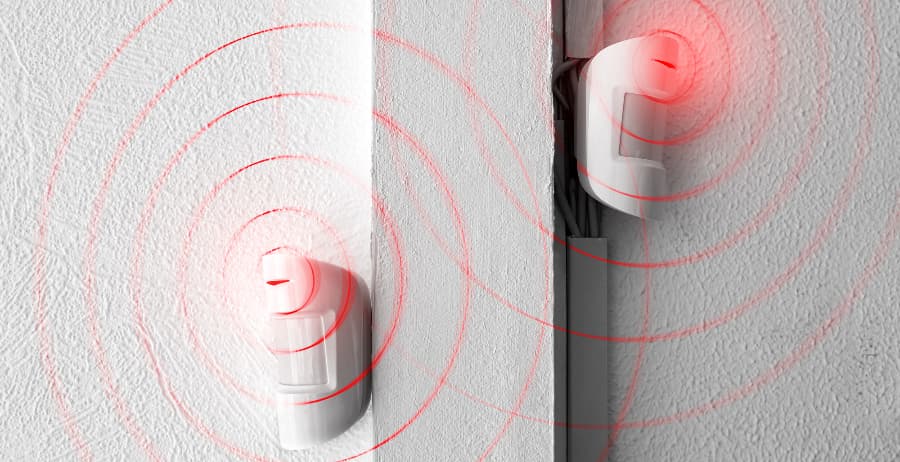How to minimize motion sensor false alarms in your San Diego home

Motion sensors are crucial components in a multi-layered home security plan, as they’ll let you know if dubious activity is transpiring at your house. Regrettably, they’re also vulnerable to false alarms, causing frustration and a bad night’s sleep for San Diego homeowners. If you’re looking for solutions, review our recommendations for cutting down on motion sensor false alarms.
What causes motion detector false alarms?
The bulk of home motion detectors employ passive infrared (PIR) technology to find movement. They monitor shifts in infrared radiation within their detection zone and can determine when something is in motion by its heat signature. False alarms are often initiated by:
- Pets leaping on sofas or tabletops
- Bursts of intense daylight through a window
- A variety of heat sources, like fireplaces and ducts
- Drastic humidity or temperature shifts, which cause components to be hypersensitive or unresponsive
Microwave motion sensors are an additional common option that discovers activity by constantly broadcasting and evaluating electromagnetic waves. Called active motion sensors, they spot movement due to alterations in the returning signal. Any unanticipated activity, like curtains moving when an HVAC fan turns on, can initiate an alarm.
Ideas for decreasing motion sensor false alarms at your San Diego home
In addition to a lack of sleep, motion sensor false alarms can be even more troublesome as they might lower your sensitivity to actual dangers. Additionally, repeated false alarms can become an annoyance for emergency providers and may affect ensuing response times. Thankfully, you can help prevent them by adhering to these suggestions:
- Investigate the sensitivity settings of your devices and adjust to your furry friend’s size and behavior.
- Even when using pet-sensitive motion sensors, it’s wise not to direct them at high-activity areas like food dispensers.
- Avoid pointing motion sensors at windows that receive bright sunlight.
- Make sure areas are sufficiently insulated to help prevent temperature fluctuations.
- Dust and wipe off equipment frequently to keep sensors clear.
- Monitor batteries and swap out as needed. Certain devices will even inform you when batteries are getting low.
- Consider a professional installation to ensure correct placement.
You may also choose multi-function devices that utilize both passive and active tools to identify motion, providing greater accuracy.
How to incorporate motion sensors into your San Diego smart home?
Installing motion sensors in an automated smart home is a fantastic way to enhance your safety and convenience. You’ll have the opportunity to do the following:
- Receive immediate updates on your cell phone any time activity is spotted. You could also use them to update you when your little ones arrive home from school.
- Have indoor cameras to record any time a motion sensor is tripped.
- Change temperature settings or lighting based on your home’s occupancy. This functionality can help lower utility bills.
Top smart home motion detectors, like those from Vivint, continue to harness artificial intelligence (AI) to better detect threats and decrease false alarms.
Create your Vivint smart home with dependable motion sensors
Get the top motion sensors in San Diego from Vivint when you customize your fully integrated smart home. Our sensors are pet-sensitive and let you configure a variety of automation actions. You’ll also enjoy a five-year battery life and instant cell phone alerts. Reach out to (619) 492-4324 today to design your system.